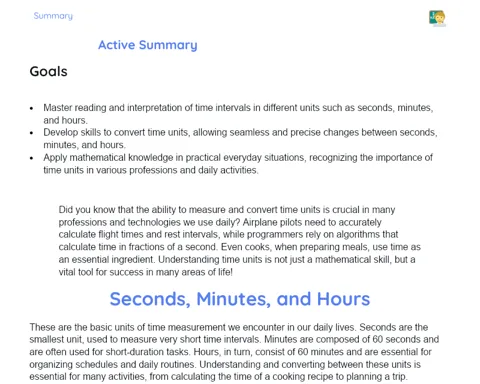Mastering Fractions and Decimal Numbers: Conversion in Practice
Objectives
1. Develop the skill of converting numbers between fractions and decimals.
2. Correctly position fractions and decimal numbers on the number line.
3. Apply knowledge to contextualized problems in daily life.
Contextualization
Fractions and decimal numbers are part of our daily life in various ways. For example, when we buy a piece of pizza, we use fractions to describe the portion we want. Decimal numbers frequently appear in situations such as calculating change when making a purchase or reading a fuel gauge. Understanding how to convert between fractions and decimals is essential for efficiently solving practical problems.
Relevance of the Theme
The conversion between fractions and decimal numbers, as well as the ability to solve practical problems, are essential skills that have direct applications in various professional fields, such as finance, engineering, and technology. These skills are fundamental not only for mathematical understanding but also for solving everyday problems.
Concept of Fractions and Decimal Numbers
Fractions are a way of representing a part of a whole, expressing the relationship between a part and the whole. They consist of a numerator (top part) and a denominator (bottom part). Decimal numbers, on the other hand, are a numerical representation based on the decimal system, where the position of each digit represents a power of 10. The conversion between fractions and decimal numbers is essential for solving practical problems and understanding various everyday situations.
-
Fractions represent parts of a whole.
-
Decimal numbers use the decimal system.
-
Conversion between fractions and decimals facilitates the solving of practical problems.
Conversion of Fractions to Decimal Numbers
The conversion of a fraction to a decimal number involves dividing the numerator by the denominator. For example, to convert the fraction 1/2 to a decimal number, we divide 1 by 2, resulting in 0.5. This process is fundamental to understanding how different numerical representations relate.
-
Divide the numerator by the denominator.
-
Example: 1/2 = 0.5.
-
Important process for numerical understanding.
Conversion of Decimal Numbers to Fractions
To convert a decimal number to a fraction, we write the number as a fraction with a denominator of 10, 100, 1000, etc., depending on the number of decimal places. We then simplify the fraction. For example, 0.75 can be written as 75/100, which simplifies to 3/4.
-
Write the number as a fraction with denominators of 10, 100, 1000, etc.
-
Simplify the resulting fraction.
-
Example: 0.75 = 75/100 = 3/4.
Practical Applications
- In finance, to calculate interest and interpret financial results.
- In engineering, to measure materials accurately.
- In kitchens, when measuring ingredients and adjusting recipes.
Key Terms
-
Fraction: Representation of a part of a whole, composed of a numerator and a denominator.
-
Decimal Number: Numerical representation based on the decimal system, where each position represents a power of 10.
-
Conversion: Process of transforming a fraction into a decimal number and vice versa.
Questions
-
How can the ability to convert between fractions and decimal numbers facilitate the solving of everyday problems?
-
In what ways can understanding these conversions be useful in different professions?
-
Think of a daily situation where you used fractions or decimal numbers. How could converting between them have helped?
Conclusion
To Reflect
Reflecting on the importance of understanding fractions and decimal numbers is fundamental to realizing how these skills are applied in our daily lives and in various professions. The ability to convert between fractions and decimals not only facilitates the solving of mathematical problems but is also crucial in practical activities such as cooking, shopping, measuring materials, and interpreting financial data. By developing these skills, we are preparing to face real challenges in an efficient and precise manner.
Mini Challenge - Kitchen Recipe Challenge
Let's apply knowledge of fractions and decimal numbers in a kitchen scenario by adjusting a recipe for different servings.
- Choose a recipe you like that has measurements in fractions (for example, 1/2 cup of sugar, 3/4 cup of flour, etc.).
- Convert all fractional measurements to decimal numbers.
- Imagine that you need to make the recipe for double the number of people. Adjust all measurements using fractions and converting them to decimals.
- Write down the new measurements and explain how you made the conversions.
- Compare the original measurements with the adjusted ones and verify if all conversions are correct.



